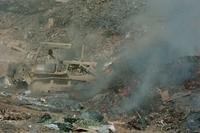The following is an excerpt of the Manuscript
"Mindtrack"
Learning how to engage your inner athletic potential after living through the trauma of war
By Dr Stephen Ross, Sports Psychologist and Liz McLean
Human beings tend to take dramatic measures to avoid emotional, psychological and physical pain. Unresolved pain takes an enormous toll on the body, mind and spirit. They are much more connected than one may realize, and directly play into how the other aspects of human experience react. Some newer research for example, seems to place the underpinnings of arousal and hyperarousal in the heart. The hypothesis is that the heart sends chemical messages to the brain that ultimately result in the "fight or flight" response.
The term PTSD has become culturally loaded in recent years. In World War II, warriors were said to be suffering from "shell shock", which became associated with weakness. The truth is that the trauma of war has nothing to do with strength or weakness. It has everything to do with a set of chemical and neurological responses to trauma that these bodies we inhabit are not fully able to reconcile. Peter Levine, who written extensively on his trauma research over the past several decades, believes that the area of the brain known as the neocortex and makes us fully human can prevent us from releasing the energy attached to trauma. Animals exposed to trauma go through an energy release immediately after the trauma that can be directly observed in their body movements.
Scientists and researchers in the animal worlds are all too familiar with this physical, post trauma release. Unburdened by the neocortex, Levine argues that animals go through a body experience following trauma that releases the trauma energy entirely.
The culture has manipulated the term PTSD which has led to a sub-cultural dilemma of either attempting to reclaim the true meaning of trauma and post trauma in this book, or attempting to destigmatize the term. The bottom line for us is that we are all broken. Brokenness is a fundamental part of our humanity. The societal pretense that brokenness is a character flaw is an enduring and dangerous lie. Admitting our shared brokenness is the beginning of healing.
For some, terms such as PTSD don't bother them. For others, they can begin to think that they are their particular diagnosis.
The brain responds to trauma...period. Any human being exposed to trauma experiences a series of chemical and organic changes in the brain and body that disrupt our homeostatic balance. That to us is not a disorder, it's what our brains do to try to restore order.
The issue is when the traumatized brain encounters blocks in resetting itself. There is some evidence that traumatic memories get laid down in the brain more vividly and concretely than other memories. Hypothetically, we could make the argument that the brain does this in order to provide an early warning system, should similar traumatic events reoccur. For warriors exposed to multiple traumatic events, we can only assume that this compounding effect exposes the brain and body to something akin to repetitive concussions. Before the brain and body can begin to heal, other traumatic events complicate the healing process.
In the past decade, PTSD has become paired with warriors, those who have seen traumatic events/sights, endured trauma, and been tasked with missions demanding survival through pulling the trigger on the modern-day "machines" of war.
The disconnect comes when returning warriors, these elite and highly trained individuals, come home to resume societal tasks that are menial in comparison. When the mission suddenly changes from kill or be killed, to an administrative assignment for example, the cognitive dissonance is almost impossible to reconcile. That is why seeking help is not a sign of weakness, it is a sign of strength, a sign that you wish to set your life in order once again.











